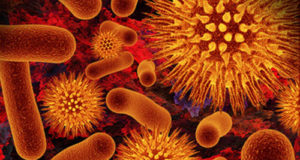Review Overview
Layperson appropriateness
Accuracy and educational
Over 25 million people in the U.S. have type 2 diabetes, which means they don’t utilize insulin properly (a condition called insulin resistance) and blood glucose (or sugar) levels end up much higher than what is healthy.
However, the majority of individuals with diabetes are not aware they have the condition due to the fact that the symptoms, on their own, seem more like annoyances then signs of a dangerous condition. Your best hope is early diagnoses if you want to avoid serious diabetes complications—such as kidney disease, vision problems, and thyroid issues. Here are the ten most common early warning signs of type 2 diabetes…
1. Numbness
Numbness that starts as a tingling in the hands, fingers, legs, and feet is often an early warning sign of diabetes. This occurs due to an increase in blood sugar levels, causing blood vessel restriction to the extremities, and eventually damage to nerve fibers. For many, this numbness is often the first sign of any health issues.
Diabetes numbness presents in a prickly, tingling, or pain in the hands and feet that starts out minor at first, but as the nerve damage progresses over times, and sometimes years, mild tingling can become chronic and quite painful, involving motor function, sensory, autonomic and involuntary nervous system response with a sudden and painful and numbness in the fingers, toes, feet, hands, legs, and arms, sometimes accompanied by muscle wasting of the hands and feet.
2. Increased Urination
Typically, diabetes sufferers claim they had an overwhelming urge to urinate, and when they do urinate the amount is quite significant. This increased urination is what often spurs a doctor’s visit and a type II diabetes diagnoses. This increased urination will often result in severe dehydration. So it’s vital to keep your fluid levels high. If the body becomes dehydrated, immune function decreases, leaving you susceptible to all sorts of illnesses and even damaged kidney function.
Polyuria is how doctors refer to increased urination. It characterizes a condition that causes the output of urine to increase more than usual and passes abnormally large amounts of urine (typically more than 3 litres per day compared to the average 1 to 2 litres per day) each time you go to the bathroom. Polyuria is a common symptoms of type II diabetes (and also type I diabetes).
3. Weight Loss
Rapid and unexplained weight loss is common to unmediated type 2 diabetes because the body can’t absorb glucose (sugars) properly. This occurs with unmanaged type I diabetes in particular. However, patients undiagnosed with type II diabetes who are getting insufficient insulin, which transports glucose from the blood into the body’s cells to use as energy, can also experience considerable and sudden weight loss with no obvious cause (no exercise or dietary changes).
When the body is unable to get adequate insulin, it will begin to burn off fat and muscle as a source of energy. Obviously, this will considerable eat into and reduce overall body weight. If you have suddenly and unintentionally shed between 5 and 10-pounds of body weight in less than 6-months, talk to your doctor immediately. Your doctor can conduct a blood test to determined undiagnosed diabetes and begin treatment immediately to manage insulin levels.
4. Increase in Appetite
With sudden weight loss often comes an increase in appetite, which might make you feel fortunate at first because you feel like you can eat anything you want without consequences. However, your body is in a diabetic state, robbing your cells of essential energy, which explains the increased hunger that often isn’t satiated for long after eating a meal.
Increased appetite, when you consume more calories than your body requires for energy expenditure may lead to weight gain. Although, it’s normal to have an increased appetite after physical exertion, but this is generally alleviated after eating. However, a significantly increased appetite over a prolonged period could be a symptom of a serious illness, such as diabetes or hyperthyroidism. If you are experiencing excessive hunger that is ongoing, make an appointment to see your doctor.
5. Blurry Vision
You may already know that diabetes can lead to vision issues and even blindness if left untreated. It’s true; blurred vision is a common cue of type 2 diabetes. This occurs as glucose levels spike, damaging blood vessels and restricting fluid to the eyes. If a diabetes diagnoses isn’t made, the patient could suffer complete vision loss. According to the American Diabetes Association, diabetes patients a higher risk of minor eye disorders and blindness vs. those without the disease. This is why regular optometrist exams are important.
Diabetes patients are also have a 40-percent higher risk of developing glaucoma (a condition that causes pressure in the eye and retina nerve damage) compared to non-diabetic individuals. Statistics from the American Diabetes Association claim that the longer a patient has diabetes, the higher the glaucoma risk. Likewise, cataracts (the clouding over of the eye’s lens) risk is 60-percent higher in patents with diabetes.
6. Itchy, Dry Skin
Type II diabetes can affect every part of the body, including the skin. When diabetes affects blood circulation, our sweat glands will often become dysfunctional, resulting in dehydrated, flaky, itchy, and irritated skin. This is why skin issues are often the first sign of a problem and the first indication of diabetes. Luckily, management of diabetes means that most skin conditions can be prevented and cleared up once caught early.
Undiagnosed diabetes patients are more prone to several skin ailments, including diabetic dermopathy, fungal infections, diabetic blisters, bacterial infections, dry and itchy skin due to poor circulation around the lower parts of the legs, necrobiosis lipoidica diabeticorum, boils, carbuncles, eruptive xanthomatosis, infections around the nails.
7. Unexplained Fatigue
Fatigue is one of the most prevalent and frustrating diabetes symptoms. Sudden fatigue can disrupt every aspect of your life–socially, career-wise, your family life, and even bobbies that you were once passionate about may suddenly be ignored because you just don’t have adequate energy. Diabetes related exhaustion occurs due to insufficient insulin levels. We’ve already established that insulin resistance leads to an inability to absorb essential energy (sugars). When this occurs, energy levels suffer, causing extreme mental and physical fatigue.
When blood glucose is high, as it is with type II diabetes, your blood can become thick and “sludgy,” resulting in decreased circulation that prevents nutrient and oxygen transportation to cells. This can also occur when blood sugars are low and fuel is adequate to energize the body. Many people with type II diabetes also suffer from extreme exhaustion due to inflammation of the blood vessels.
8. Unquenchable Thirst
We’ve already established the type II diabetes can cause increased urination, both in frequency and amount of urine purged from the body with each bathroom break. Increased urge to urinate will leave the body in a state of rapid dehydration. The body will demand that lost liquid be replenished, and an unquenchable thirst will often result as a direct effect of lost body fluids.
However, diabetics can also become extremely thirsty for other reasons. For instance, high blood sugar levels can cause dry mouth, low hydration, and increased thirst in those with undiagnosed diabetes. Once blood sugar becomes managed, thirst will generally return to normal. A condition known as diabetes insipid us, which impacts the kidneys via hormones, can also cause a increased urination, large quantities of urine, dehydration, and increased thirst.
9. Slow Healing Cuts or Bruises
You might notice that if you suffer a cut or bruise, healing time will take much longer than it normally does. Wounds, burns, abrasions, or sores that take more than a few weeks to heal, are prone to infection and often require medical treatment can indicate an underlying health issue, such as undiagnosed diabetes. This slow healing is due to high glucose levels weakening the immune system and slowing the rate of healing.
This is due to high blood glucose levels circulating in the bloodstream and gradually damaging the nerves. Neuropathy can lead to poor blood circulation over time, impeding the transport of fresh blood for skin healing. In the case of burns, sores, and wounds that go unhealed for long durations, fungal, bacterial, and gangrene infections can develop.
10. Irritated Gums
Oftentimes, type 2 diabetes sufferers notice that their gums become red, swollen, and irritated. They might also literally see the gums receding from the teeth and experience gum infections, and eventually, gum disease as result. According to researchers at Marquette University, periodontal disease (gym disease) and diabetes can actually feed off one another, causing more severe forms of each condition. This means that gum disease contributes to diabetes and vice versa.
Research from the American Academy of Periodontology (AAP), unmanaged diabetes patients are particularly at risk for periodontal disease. The reasoning is that both gum disease and diabetes encourage inflammation throughout the entire body, and if you consider inflammation of essential body functions, like blood vessels, inflammation can result in all sorts of issues, including stroke, kidney disease, heart disease, and more.
By Catherine Roberts
 Vitamin Agent The Health & Naturalistic Source
Vitamin Agent The Health & Naturalistic Source





